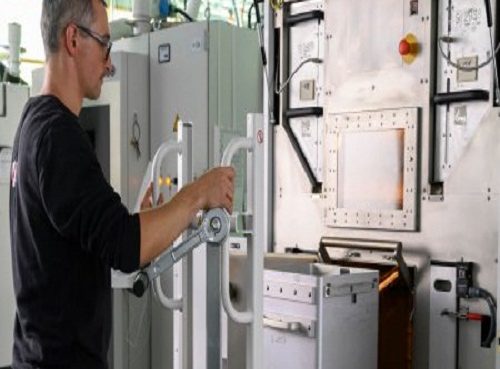Hexagon’s Manufacturing Intelligence division has launched Nexus, an open platform for smart manufacturing that aims to transform how technology professionals collaborate and innovate.
The platform, announced at Hexagon’s HxGN Live Global 2022 conference in Las Vegas this week, will allow for the sharing of real-time data across different design, simulation, and production applications. It will also connect different applications to form workflows and combine technologies to develop unique solutions to engineering and manufacturing problems, from concept to delivery.
Hexagon stressed Nexus will empower cross-functional teams to leverage fragmented digital data by improving visibility and connectivity. It will also help its existing customers gain unprecedented insight, bring their ideas to life faster, produce higher-quality results, and fully optimise operations.
Hexagon’s Manufacturing Intelligence division provides solutions that use data from design and engineering, production, and metrology to help make manufacturing smarter.

The Nexus platform will allow those involved in the manufacturing process, from concept to delivery, to access data that will empower them to work more efficiently.
According to Hexagon, the open platform is the foundation for the company’s new solution offerings within the smart manufacturing space. It will also be capable of leveraging Hexagon data sources from across the company’s portfolio; connecting hundreds of Hexagon design and engineering, production, and metrology software tools, and unlocking new insights from metrology devices and connected machines.
During the announcement in Las Vegas, Hexagon said they are also developing purpose-built solutions through the platform that combine multiple technologies to help users to improve productivity and digitally optimise complex processes and workflows.
For example, the platform could help create a ‘ready-to-go’ workflow for 3D printing and optimise a reverse-engineered part that could be used to help streamline the repair of grounded aircraft components. This workflow connects data from a 3D laser scan to Hexagon products such as RECreate, MSC Apex Generative Design, MaterialCenter and Simufact Additive, as well as connecting to a third-party market-leading application called CADS Additive to improve productivity and enable rapid collaboration to address production issues.
“Our customers are managing increased complexity in the market, which is demanding faster innovation than ever. Siloed tools, rigid systems and inaccessible data are increasingly ill-suited to the manufacturing industry’s needs and pressures,” said Parth Joshi, chief product and technology officer for Hexagon’s Manufacturing Intelligence division. “Our vision for Nexus is to enhance the products our hundreds of thousands of customers have come to know and love with additional capabilities, powered by the cloud, AI and machine learning, real-time collaboration and advanced visualisation.”

Users can access data through Nexus to help better streamline, for example, an additive manufacturing workflow in a CAD system, as seen above.
E&T spoke to Stephen Graham in Las Vegas, president of Metrology and Production Software at Hexagon’s Manufacturing Intelligence division, about the engineering aspect of the new platform, in light of the announcement.
Regarding the development of the platform, Graham explained that there are two different technology domains that Hexagon deals with. First is the web front-end, whereby a substantial team works on web functionality, user logins etc, and the integration of all of Hexagon’s IT systems. Then there is the engineering platform underneath it, which is where the sophisticated functionality happens – connecting the different manufacturing technologies the company offers to existing companies and making them work together.
“We built the initial functionality of the platform around data sharing – so it’s about connecting applications that already exist within our portfolio today,” Graham told E&T, also stressing that Hexagon does not want to displace what their customers already have.
“Nexus is about making the connection between the existing applications [at Hexagon] to establish the methodology for them to share and consume data in one place,” he added. “It is the centrepiece for sharing data.”
Hexagon also worked closely with Microsoft to create the open platform, drawing from the company’s fluid framework technology that underlies Office 365 and allows for collaboration and data sharing between its desktop apps such as Word, Excel, and PowerPoint. “That is exactly the same problem we’re trying to address – where a lot of manufacturing technologies, already installed by users, are embodied in desktop applications,” Graham explained. “We want to enable a new paradigm of collaboration and data sharing between different departments in organisations. The fluid framework matches exactly that.”

Nexus is all about collaboration and data sharing across a safe network.
E&T also asked Graham how the open platform differs from product lifecycle management (PLM) which is commonly used across the manufacturing industry. “PLM systems are very linear and rigid, and typically when an organisation purchases a PLM, they have to reconfigure the entire organisation to match the system,” Graham explained. “So the ambition is to piece together solutions like Lego bricks to make project workflows more flexible.”
Graham added that introducing a PLM into your organisation is a huge strategic decision they could be stuck with for years, but he believes Nexus will be a very incremental approach that could solve one minor problem and will allow the organisation in question to grow from there.
It’s still early days for the Nexus platform, and Graham stressed that Hexagon Manufacturing Intelligence’s initial focus will be their existing customers who use Hexagon products within their processes, with the ambition to grow beyond that in the years to come. “We’re hoping we can take Nexus to customers and actually get to the heart of what the potential problems within their manufacturing processes are, using it to solve these problems to optimise their operations and create new solutions and products.”
Source: E&T










